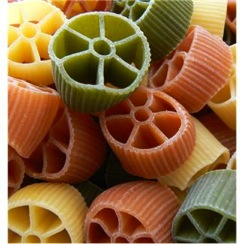 In today’s technology driven world, there seems to be a different hashtag (#) trending on Twitter daily for National (insert food) Day. Similarly, the Facebook group “Food Holidays that might get Overlooked” has created an events to keep you informed of national food holidays. Their event for National Pasta Day can be found here. As a self-proclaimed foodie, I had to start following the page and attending all of their events as soon as I found them. I love a reason to celebrate, especially one that involves food!
In today’s technology driven world, there seems to be a different hashtag (#) trending on Twitter daily for National (insert food) Day. Similarly, the Facebook group “Food Holidays that might get Overlooked” has created an events to keep you informed of national food holidays. Their event for National Pasta Day can be found here. As a self-proclaimed foodie, I had to start following the page and attending all of their events as soon as I found them. I love a reason to celebrate, especially one that involves food!
While we are celebrating national pasta day today, I figured it would be interesting to learn more about the history of pasta. I personally did not know anything about the history of pasta until I investigated more for this post. While researching I discovered a great website, The History of Kitchen, on PBS that explains how our foods came to be and why we eat some of the foods we eat today.
History of Pasta
Pasta is made with eggs, flour, and water, which were all staples in ancient times. This makes it challenging to determine its true origin; however, pasta is traditionally defined as being made with durum wheat. When taking this into consideration, it is believed that pasta originated in Italy, but the concept was adapted from Chinese noodles that were brought to the area by Marco Polo in the 13th century. It is believed that noodles originated in central Asia.
Pasta comes in many different styles, whether you prefer macaroni or shells, there are over 60 different types of pasta. Additionally, pasta can be purchased dry, as in the traditional boxes of pasta you have stored in your pantry, or fresh pasta can be created at home or purchased at a specialty store
A majority of pastas contain wheat flour and cannot be enjoyed by those individuals that are gluten free. Quinoa, a gluten free grain, has been made into a pasta alternative in recent years. Quinoa pasta allows those who are gluten free to enjoy pasta on a regular basis. In addition to Quinoa there are several other types of gluten free pastas including rice and corn pastas. These pastas are sold in national grocery store chains and local health food stores all across the country. They are purchased in a box similar to dry pastas.
Pasta often is avoided by those who are trying to watch their weight. The calories and carbohydrates often scare people off. The glycemic index of pasta is actually not too high which often surprises people. However, most people need to watch the portion size as 1/3 cup of cooked pasta has 15 grams of carbohydrate and many people fill their plate up having up to 2 cups! In recent years, pasta companies have made healthier pasta options than the traditional white pasta. Whole wheat and vegetable pastas are now readily available in the major grocery stores nationwide. Dreamfield pastas are an example of a low carbohydrate pasta. Additionally, there are ways to make pasta like dish using fresh vegetables. From spaghetti squash to zucchini, there are many healthy pasta alternatives using vegetables.
Nutritional Value
Pasta is a good source of carbohydrates and can also be a great source of dietary fiber, depending on which type of pasta you choose. Pasta also provides calcium and iron. Compared below is the nutrition information for white and wheat pasta.
| White Pasta 1 cup cooked |
Whole Wheat Pasta 1 cup cooked |
|
| Calories | 182 calories | 174 Calories |
| Fat | 1.1 g | 0.8 g |
| Sodium | 1 mg | 4 mg |
| Carbohydrates | 35.5 g | 37.2 g |
| Dietary Fiber | 2.1 g | 3.9 g |
| Protein | 6.7 g | 7.5 g |
Whether you prefer fresh pasta, gluten free, or veggie pasta, enjoy some pasta today to celebrate national pasta day! 
Recipes
By Michelle Ostran
Drexel University Graduate Student, MS in Human Nutrition
